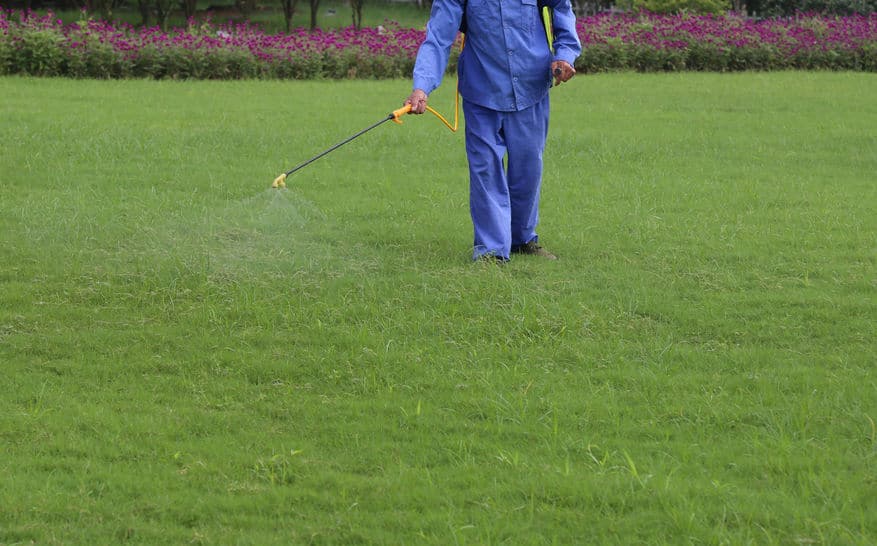
Lawn Fertilizer Orlando
Are you curious about how your neighbor get their lawn to look lavish and green? The mystery lies in lawn treatment and fertilization. Preparation and continuous maintenance make your lawn and garden look truly flawless season after season. Like most plants, lawns and gardens require key nutrients for appropriate growth.
That is where lawn treatment is important. Fertilization furnishes your lawn with the supplements it is lacking. Healthy grass doesn’t simply look even and green, it needs the right amount of water, protection from insects, and fewer weeds encompassing it. If lawn fertilization AND watering are done properly, you will have the lawn you desire.
Advantages of Lawn Fertilization
The way to accomplishing a beautiful lawn lies in either spending a lot of time and educating yourself what needs to be done and follow the right steps or hire a professional company that knows what it takes to provide the lawn of your dreams.
Your lawn needs the right nutrients so that is can grow properly and flourish. You have to recognize what your grass needs and how frequently. This will fluctuate contingent on the area in which you live and the grass you have. Moreover, climate conditions, diseases, bugs, insects and conflicting moisture levels in the soil would all be able to imperil the general wellbeing of your lawn and yard. The best way to battle these potential issues is to give your lawn the correct nutrients along with proper watering.
Advantages of lawn treatment include:
- Quicker Recovery: If your garden or lawn have dry spots, it has likely been influenced by the lack of water, high temperatures, bug damage, lawn disease, and weeds. Correct lawn fertilization will provide the fastest recovery.
- Protection from Weather/Environmental Conditions: The more nutrients your garden has, the better prepared it is to make through these conditions.
- Vibrant Color: The main component of having bright green color is lawn fertilization. The mix of sufficient water levels and nutrients gives your yard a sound sheen.
- High Density: Thick grass makes your garden look better, however, it doesn’t stop there. It likewise helps in weed control by occupying all accessible room, so weeds have no space to flourish
When To Fertilize Your Lawn
Fertilizing the lawn might sound like an easy process. It is important to know that creating an effective fertilizing schedule can be challenging. Too much fertilizer can cause your lawn to burn along with other issues. On the other hand, not enough fertilizer can leave a lawn susceptible to weeds and poor growth, and even insect infestations. Finding the right balance is critical for lawn health.
Annual fertilizer feeding is beneficial for the lawn in the fall. That way the lawn can prepare for winter with the right nutrients. It is also a good time to fertilize in the spring because that is when the grass begins its growth cycle. Warm season grass is also very important to fertilize with a slow-release formula at the beginning of the spring, summer and fall seasons.
Cool season grass is easier to maintain. You can fertilize it in the spring and fall. You don’t usually need to fertilize cool-season grass in the summer as it tends to go dormant.
How To Choose a Fertilizer
Choose the correct fertilizer if you want to have a healthy lawn. The area you live in, type of grass you have, and season – the are all important factors while choosing the right type of fertilizer. How do you know which is best?
Learn the number system. There are 3 numbers on every bag of lawn fertilizer: 10-10-10 or 20-5-10. These numbers represent the percentage of nutrients.
The first number is nitrogen (N), which stimulates plant growth and gives them a vivid green color.
The second is phosphorus (P). It is for root growth and seedling development.
The third number is potassium (K). This means it stimulates the root development and gives resistance to drought.
In order to figure out which ratio you need, it’s best to do a lawn and soil test. Check if your grass is cool-season, warm-season, or a mix.
Warm-season grass turns brown after the 1st frost. Cool-season grass will keep its green color all year round in cool areas.
Know what type of grass you might need, as it depends on the area you live in. Generally, southern states support warm-season grass.
The central states have areas for both warm and cool-season kinds of grass. Determine soil types and drainage. Knowing the right soil type is very important. Sandy soils drain well. But nutrients might leak out with the draining water.
Clays soils might actually be very fertile. But clay soils have poor drainage, and it can affect the health of your lawn.
Choose your lawn fertilizer option.
Store-bought fertilizers are most of the time synthetic. There are two categories for synthetic fertilizers: quick-release and slow-release.
Quick-release granules allow the nitrogen get to the soil quickly. It helps the lawn gain its vibrant green color quicker.
Some of the nutrients can be lost since the plants can’t utilize them all at the same time. Your lawn might look great at the beginning, but the risk for damage and disease becomes higher. Quick-release granules are more likely to leave the grass brown (fertilizer burn) if over-applied. Slow-release granules won’t deliver that quick color, but they are less likely to burn your lawn and generally help your lawn last longer.
